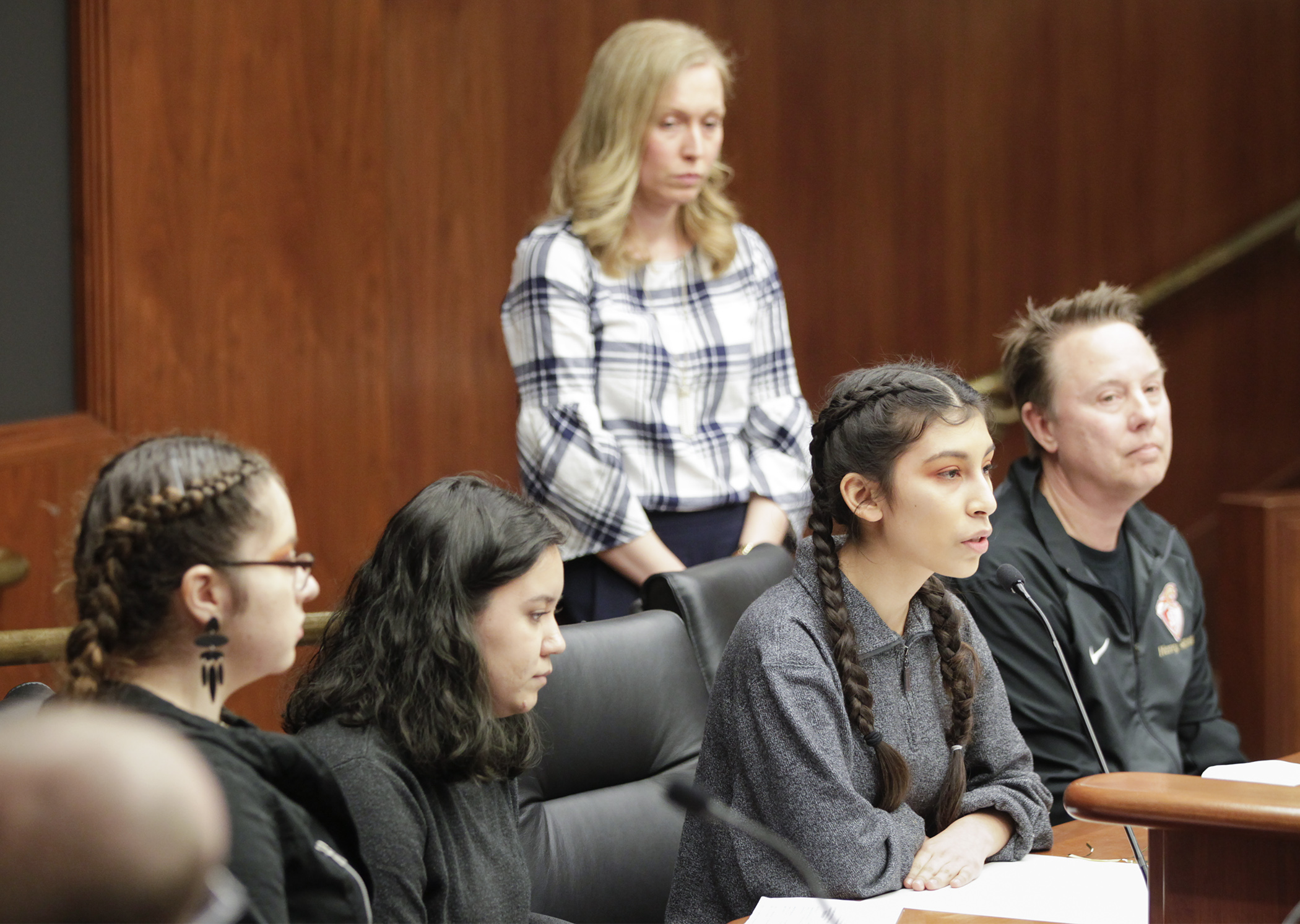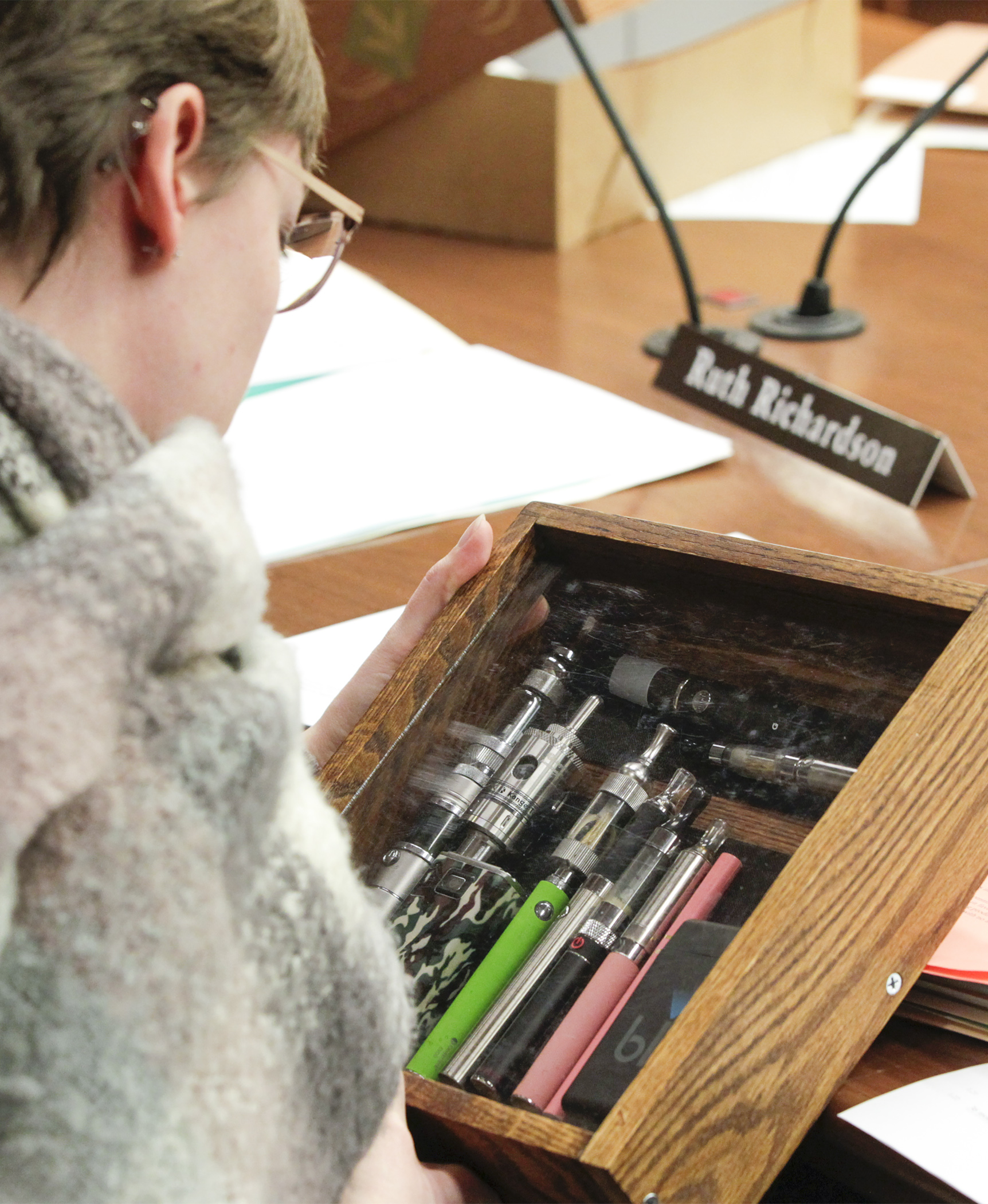Bill to raise age for buying tobacco products to 21 moves forward

Legally blowing smoke rings may have to wait a few years longer for young Minnesotans.
Rep. Heather Edelson (DFL-Edina) wants to raise the legal age for purchasing tobacco products to 21.
HF331 was approved, as amended, by the House Commerce Committee Tuesday and sent to the House Ways and Means Committee with a recommendation for re-referral to the House Judiciary Finance and Civil Law Division.
In addition to raising the age to purchase tobacco, nicotine and lobelia products, the bill would prohibit use on public and charter school grounds and prohibit people under 21 from entering tobacco shops.
The proposal also seeks to use alternative, rather than criminal, penalties for underage users, while increasing penalties for those who sell to underage tobacco users or provide a fake ID to them.
“Putting kids in juvenile detention centers because they are smoking nicotine doesn’t fix the problem,” Edelson said.
 Rep. Carlie Kotyza-Witthuhn looks over tobacco-related items confiscated at Henry Sibley High School. The House Commerce Committee approved HF331, that would, in part, raise the age for persons to purchase tobacco to 21. Photo by Paul Battaglia
Rep. Carlie Kotyza-Witthuhn looks over tobacco-related items confiscated at Henry Sibley High School. The House Commerce Committee approved HF331, that would, in part, raise the age for persons to purchase tobacco to 21. Photo by Paul BattagliaInstead, underage offenders would be routed into smoking reduction programs and other programs designed to head off or treat addiction.
The bill receive voluble support from testifiers that included high school students, health and anti-smoking advocates, and at least one industry representative.
Tobacco campaigns, several testified, disproportionately target children and communities of color.
“Tobacco addiction doesn’t happen to young people by accident. It isn’t experimentation at all. It’s the result of deliberate and highly targeted marketing,” said LaTrisha Vetaw, a health and policy advocate at Northpoint Health & Wellness Center.
Her testimony echoed those of three high school students who spoke of their school bathrooms being turned into vape lounges, of clothing manufactured to hide vaping tools, and Latino students being targeting by advertising.
“It takes a toll on our future,” said Britney Meta Rodrigues.
The human brain continues to develop into a person’s 20s. Nicotine has been shown to negatively impact brain formation and cognition, and increase vulnerability to subsequent addictions, said Dr. Ann Joseph, a medical investigator and professor at the University of Minnesota.
Studies have also shown that delaying initiation to nicotine into a person’s 20s reduces their chance of developing an addiction by around 80 percent, Joseph said.
Edelson, who presented the bill as a matter of protecting children’s health, received some pushback from Rep. Greg Davids (R-Preston) and Rep. Pat Garofalo (R-Farmington). Both live in districts abutting a state border.
The two are concerned that the bill may inadvertently incentivize the practice of buying cigarettes across state lines and then selling them illegally in Minnesota.
Minnesota taxes cigarettes at considerably higher rates than neighboring states and a smuggler could make as much as a $1,000 on a case of cigarettes, according to Garofalo.
A companion, SF463, sponsored by Sen. Carla Nelson (R-Rochester), awaits action by the Senate Health and Human Services Finance and Policy Committee.
Related Articles
Search Session Daily
Advanced Search OptionsPriority Dailies
Ways and Means Committee OKs proposed $512 million supplemental budget on party-line vote
By Mike Cook Meeting more needs or fiscal irresponsibility is one way to sum up the differences among the two parties on a supplemental spending package a year after a $72 billion state budg...
Meeting more needs or fiscal irresponsibility is one way to sum up the differences among the two parties on a supplemental spending package a year after a $72 billion state budg...
Minnesota’s projected budget surplus balloons to $3.7 billion, but fiscal pressure still looms
By Rob Hubbard Just as Minnesota has experienced a warmer winter than usual, so has the state’s budget outlook warmed over the past few months.
On Thursday, Minnesota Management and Budget...
Just as Minnesota has experienced a warmer winter than usual, so has the state’s budget outlook warmed over the past few months.
On Thursday, Minnesota Management and Budget...